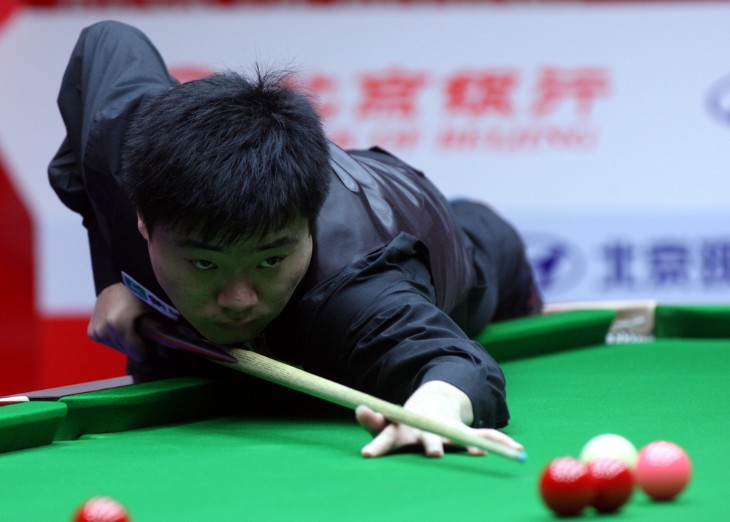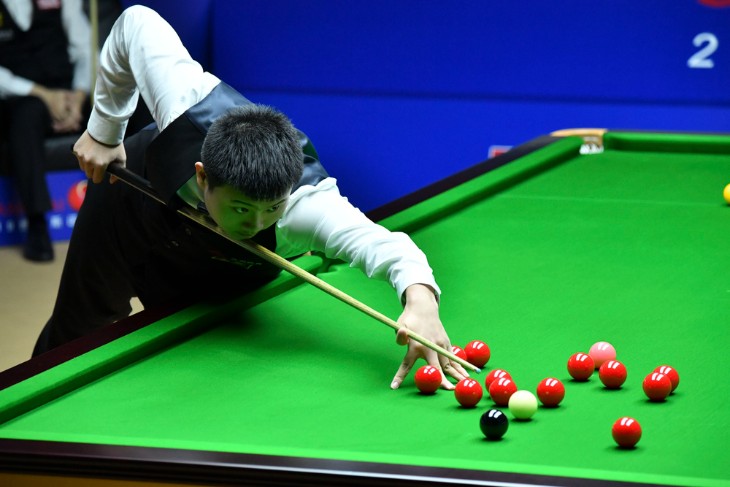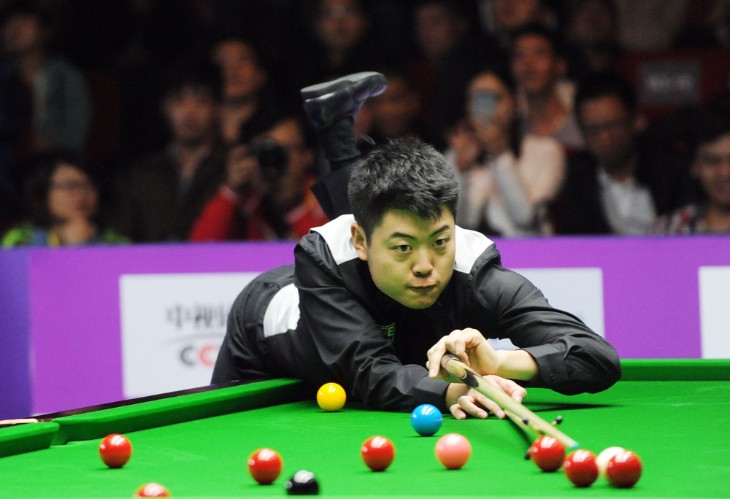- Key Factors Influencing Frame Handicap Bets
- Analysing Player Performance and Statistics
- The Role of Frame Handicap in Tournament Strategies
- Assessing Odds and Payouts in Frame Handicap Betting
- Influence of External Conditions on Snooker Handicap Betting
- The Impact of Game Formats on Handicap Betting Strategies
- Comparing Global Betting Markets for Snooker
- Conclusion
Frame handicap betting in snooker is a type of wager where a virtual advantage or disadvantage is given to players based on their perceived skill levels. This method is primarily employed to level the playing field, particularly in matches where there is a clear favourite and underdog. The handicap is expressed in terms of frames, meaning the favoured player must win by a larger margin for the bet to pay out. Conversely, the underdog can lose the match by a certain number of frames and still be considered the winner in terms of the bet. This form of betting adds an additional layer of complexity and excitement to snooker betting, as it requires a deep understanding of both players' abilities and current form.
The practice of frame handicap betting is not just about predicting the winner of a match. It demands careful consideration of how many frames a player might win or lose by. This requires punters to be knowledgeable about the players, their historical performance, head-to-head records, and current form. For example, a player known for their exceptional break-building skills might be given a handicap of -2.5 frames in a match against a lower-ranked opponent. This means they would need to win by at least three frames for a bet on them to succeed.
Key Factors Influencing Frame Handicap Bets
When considering Frame Handicap bets in snooker, several key factors play a crucial role in determining the handicap line. The most obvious is the players' world rankings, which provide a general sense of their skill levels. However, ranking alone is not a definitive indicator of performance in a specific match. Other critical factors include recent form, head-to-head history, and psychological resilience. Recent form is particularly important, as a player on a winning streak may perform significantly better than their ranking might suggest.
Another factor is the players' performance in specific conditions or venues. Some players excel in high-pressure environments such as major tournaments, while others perform better in smaller, less high-profile events. Additionally, the style of play can influence handicap betting. A player known for aggressive, high-scoring breaks might be favoured in a handicap bet over a more defensively minded player, even if their rankings are similar. Understanding these nuances is essential for anyone engaging in frame handicap betting in snooker.
Analysing Player Performance and Statistics
In-depth analysis of player performance and statistics is vital for making informed decisions in Frame Handicap betting. This analysis often includes:
- Match Win/Loss Record: Evaluating a player's overall win/loss record gives insights into their consistency and ability to handle different opponents.
- Recent Form: Assessing a player's performance in recent tournaments can indicate their current state, including confidence and skill level.
- Head-to-Head Records: Understanding how players have fared against each other in the past can be a good indicator of future match outcomes.
- Break Statistics: Looking at a player's ability to score high breaks, particularly century breaks, can be a strong indicator of their potential to win frames convincingly.
- Safety Play: Analysing a player's defensive skills can be crucial, especially in matches where tactical play could outweigh aggressive scoring.
Collecting and interpreting this data helps bettors and bookmakers alike in setting and choosing the right frame handicap bets. The more detailed the analysis, the more accurate the handicap line is likely to be, providing a fairer and more engaging betting experience.

The Role of Frame Handicap in Tournament Strategies
The application of Frame Handicap in snooker tournaments plays a significant role in both betting and player strategies. For players, understanding their own handicaps and those of their opponents can influence their approach to a match. A player who enters a match as a handicap favourite might adopt a more aggressive strategy, aiming to quickly accumulate the necessary frame lead. Conversely, a player with a handicap disadvantage might adopt a more cautious and tactical approach, trying to keep the match close and capitalise on any opportunities provided by their opponent.
From a tournament perspective, frame handicap betting adds an extra layer of intrigue and strategy for the spectators and bettors. It allows for a more nuanced appreciation of the matches, where the focus isn't just on who wins, but by what margin they do so. This adds depth to the viewing experience, as even matches with a clear favourite can become closely contested and exciting through the lens of handicap betting. It encourages a deeper understanding of the players' styles, strengths, and weaknesses, enhancing the overall engagement with the sport.
Assessing Odds and Payouts in Frame Handicap Betting
When engaging in Frame Handicap betting, assessing the odds and potential payouts is crucial. This process typically involves:
- Understanding Bookmaker Margins: Recognising that bookmakers set odds that include a margin for themselves is essential. Bettors should seek odds that offer value, considering this margin.
- Comparing Odds Across Bookmakers: Different bookmakers may offer varying odds for the same handicap bet. Comparing these can ensure bettors get the best possible value.
- Analysing Payout Ratios: Understanding the payout ratio for a given bet helps in assessing the risk versus reward. Higher odds may offer larger payouts but come with greater risk.
- Evaluating Probability and Risk: Bettors need to assess the probability of a bet succeeding against the potential risk. This involves a detailed analysis of player form and statistics.
- Utilising Betting Exchanges: For more experienced bettors, using betting exchanges can offer better odds and more control over the bets placed, though this often comes with additional complexity.
Effectively assessing odds and payouts in frame handicap betting requires a blend of statistical analysis, market understanding, and risk assessment. Bettors who master these aspects can significantly enhance their chances of successful betting outcomes in the dynamic world of snooker.
Influence of External Conditions on Snooker Handicap Betting
External conditions can significantly influence Frame Handicap betting in snooker. These conditions include factors like the type of tournament, venue specifics, and even crowd dynamics. For instance, certain players may perform better in specific venues due to familiarity or favourable conditions, such as lighting or table quality. This can affect their handicap betting odds, as they may be perceived to have an advantage in these environments.
Additionally, the format and stakes of the tournament can impact player performance. In high-stake tournaments like the World Snooker Championship, even experienced players might feel heightened pressure, which can affect their game. This, in turn, influences handicap betting, as unpredictability in player performance can lead to more volatile betting odds. Similarly, the presence and behaviour of the audience can either boost a player's confidence or add to their stress, further affecting their performance and the associated betting odds. Bettors and bookmakers alike must consider these external factors when assessing frame handicap bets, adding another layer of complexity to the betting strategy.

The Impact of Game Formats on Handicap Betting Strategies
Different game formats in snooker can significantly affect Frame Handicap betting strategies. The variety in formats demands different approaches to setting and evaluating handicaps. For instance, in shorter formats like best-of-seven frames, the volatility is higher, and upsets are more common. This can lead to tighter handicap lines. In contrast, in longer formats such as best-of-nineteen in the World Championship, the better player has more opportunity to assert their superiority, often leading to a wider handicap spread. Key factors in considering game formats include:
- Length of the Match: Longer matches tend to favour stronger players, who have more time to overcome a poor start or a mid-game slump.
- Player Endurance: In longer formats, a player's physical and mental endurance becomes a factor, impacting their performance in later frames.
- Tactical Play: Longer matches allow for more strategic depth, which can benefit players with strong tactical skills.
- Pressure Situations: Shorter formats often see increased pressure situations, which can lead to unexpected results and impact handicap betting decisions.
Understanding the nuances of different game formats is essential for both bookmakers in setting handicaps and for bettors in assessing the value and risk of their bets.
Comparing Global Betting Markets for Snooker
The global betting market for snooker, including Frame Handicap betting, varies significantly across different regions. This variance is due to cultural, legal, and market-specific factors. Key differences can be observed in:
- Market Accessibility: In some regions, such as the UK and parts of Asia, snooker betting is highly accessible and popular, with a wide range of betting options available.
- Regulatory Environment: The legal framework governing sports betting differs markedly from one country to another, affecting how snooker bets, including handicaps, are offered and marketed.
- Betting Culture: Cultural attitudes towards gambling impact the popularity and acceptance of snooker betting. In some cultures, betting is a mainstream activity, while in others, it's more niche or even stigmatised.
- Odds and Payouts: The structure of odds and potential payouts can vary, influenced by local betting habits and the competitive landscape of bookmakers.
Understanding these regional differences is crucial for global bettors and bookmakers, as it impacts strategy, market selection, and overall approach to snooker betting, including frame handicap wagers.
Conclusion
In conclusion, Frame Handicap betting in snooker presents a complex and dynamic aspect of sports betting, influenced by a myriad of factors ranging from player performance and psychological aspects to external conditions and technological advancements. The effective use of frame handicap bets requires a comprehensive understanding of the game, the players, and the broader betting environment. This includes insights into player statistics, tournament formats, and global market variations.




.webp)


 (1).webp)




















